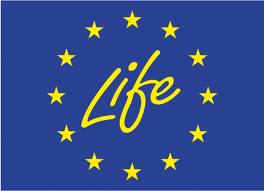LIFE project funds new assessments for IUCN's European Red List
A new project, partly funded by the
European Commission’s LIFE financial instrument
will allow for the assessment of approximately 4,000 additional species and their subsequent addition to the European Red List. Invertebrate species and plants will be the beneficiaries of these assessments, which will bring the total number of species assessed on the continent from 9,375 species to more than 15,000 by 2018, when the newly-financed assessments are set to be completed.

Photo: European Commission
Supported by the Ministry of the Environment of the Czech Republic, ArtDatabanken (Swedish University of Agricultural Sciences), several of IUCN’s Species Survival Commission experts and independent experts, the funding will allow for the assessment of all bryophytes, ferns and trees and a selection of shrubs, saproxylic beetles and all remaining terrestrial molluscs. These species will be assessed using the IUCN Red List Categories and Criteria and the Regional Red Listing Guidelines which are the most widely accepted system for measuring extinction risk around the world.
The addition of these species assessments will not only supplement the knowledge gained from the existing European Red Lists, but will also provide a more detailed picture on the status of biodiversity across the continent. They will bring us one step closer to making the European Red List a true Barometer of Life. The assessments will also provide us with a comprehensive understanding of the species’ distributions in Europe and their risk of extinction – key information which is needed to guide policy decisions and conservation actions related to biodiversity.
As part of the project, a Red List training workshop will be hosted and supported by the Council of Europe in Paris on 20-22 October, where 34 species experts will gather to learn how to apply the IUCN Red List Categories and Criteria on both the global and regional levels. Following a presentation on the European Red List initiative by IUCN, participants will understand their role in the project and the data requirements for developing a Red List assessment. They will leave with increased knowledge of how the European Red List is used in decision-making at the European level and how the project will further improve the implementation of the Bern Convention.
IUCN is excited to start this new chapter of the European Red List and looks forward to working with its partner organisations in realizing the additional assessments in the coming years.



